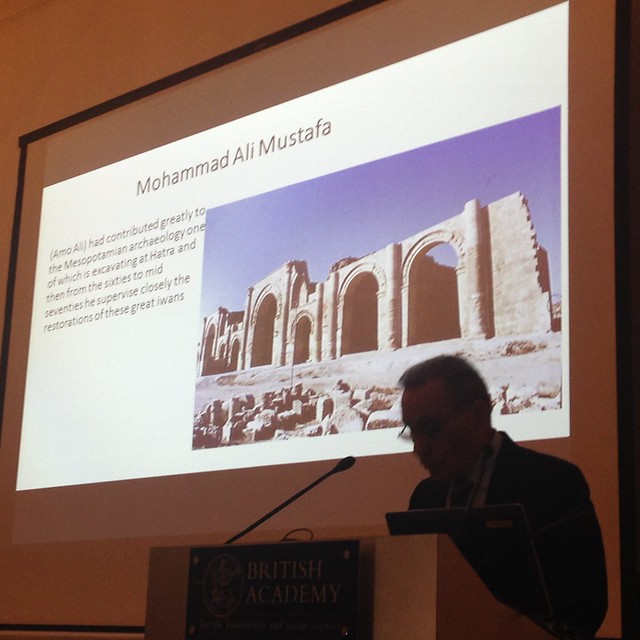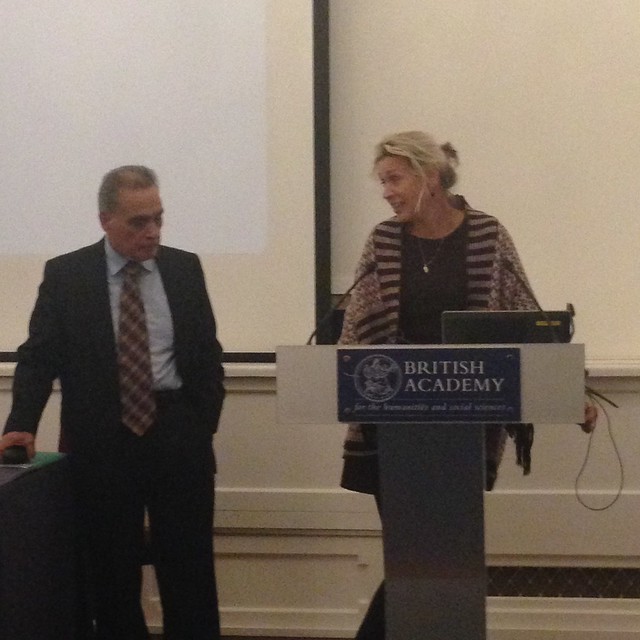Basrah Museum opens its first gallery
BISI is delighted to share this press release from the
Basrah Museum and the Friends of Basrah Museum:
A new museum celebrating the
rich cultural heritage of southern Iraq has opened its first gallery at a
ceremony in Basrah today. The gallery, which displays artefacts from the
Hellenistic period (c. 300 BC) through to the present, represents the first
major milestone in an eight-year project involving the Iraq Ministry of
Culture, the State Board of Antiquities and Friends of Basra Museum, a UK-based
charity which was set up in 2010 to provide financial, project management and
curatorial support to the museum.
The new Basrah Museum is housed in the
former Lakeside Palace in a park by the Shatt Al Arab. It will be a major
cultural resource, not only for the city of Basrah but also for Southern Iraq
and the wider region. Galleries will focus on the area’s archaeology and
history from prehistory down to the development of Basrah as a major trading
port (from which Sinbad the Sailor is said to have set sail), renowned as a
centre of scholarship, education, poetry and music.
‘This is a great day for
Iraq’s cultural heritage,’ said Minister of Culture Faryad Raundozi. ‘It is an
important example of how the international community can work with Iraqi
experts and institutions to improve the way we conserve, celebrate and protect
our past.’
Chairman of the State Board of Antiquities and Heritage Qais Rasheed
said: ‘We are delighted that Basrah now has a museum which can properly tell
the story of this great city’s past. We will continue to add more artefacts to
the exhibition and to build our collaboration with international organisations
to better understand the region’s archaeological sites and to improve the
training and support for researchers and students’.
Director of Basrah Antiquities
and Heritage, Qahtan Alabeed said: ‘This is a very special day for us. It
couldn’t have come about without the support of a great number of people –
especially the Friends of Basrah Museum and their principal funders BP. I also
want to acknowledge the dedication of colleagues in Baghdad and Basrah, which
means we’re able to display many exhibits in public for the first time in
years.’
British Ambassador Frank Baker
said: ‘The Basrah Museum reminds us of the depth of the history of Iraq, and
the great achievements of its people. It is also an example of what the UK and
Iraq can achieve when they work together – so much time and energy has been put
in by the Friends of Basrah Museum to reach this stage. My team and I look
forward to visiting over the coming weeks, to see its use as a cultural and
educational centre.’
Sir Terence Clark Chairman of
the Trustees of the FOBM, said: ‘This is the culmination of years of quiet
persistence on the part of the Trustees and the Museum staff. All of us at FOBM
recognise the global importance of Iraq’s cultural heritage and have been
determined to do what we can to support those in Iraq who are working to see it
properly managed.’
BP
was the principal donor to the project, with a grant of $500,000. Michael
Townshend, BP Middle East’s Regional President, said: “In every region in which
BP operates we look to support and protect the local culture and heritage. When
we were approached to support the establishment of this new museum for Basrah,
we wanted to help. We are glad that the people of Basrah will now have a museum
which celebrates their rich cultural history.”
The opening is followed by a
two-day conference at the museum, organised by the British Institute for the
Study of Iraq. After that, work will continue on the refurbishment of the rest
of the museum. It
is hoped that it will set a standard for the whole country, with facilities for
school parties and contents tied to the Iraqi national curriculum. New
educational programmes, supported by the British Council, will be introduced in
October to local schoolchildren.
Editorial
note
The Friends of Basrah Museum is a
UK-registered charity established in 2010 to raise funds for the Basrah Museum
and to provide support to its Director, Qahtan Alabeed. The trustees are Sir
Terence Clark, Dr John Curtis, Liane Butcher, Clare Bebbington, Dr Lamia
al-Gailani, Dr Salah al-Shaikly and the Hon Alice Walpole.
As well as FOBM and BP, the
project has been supported by The British Institute for the Study of Iraq; The
British Museum; Petrofac; The Charlotte Bonham Charitable Trust; HWH
Associates; Bur Alaman; IPBD Ltd; Control Risks Group; Field Energy Services;
Pulse Brands; and private individuals.
FOR
MORE INFORMATION
Clare Bebbington, Friends of
Basrah Museum – tel: +44 7403006106







